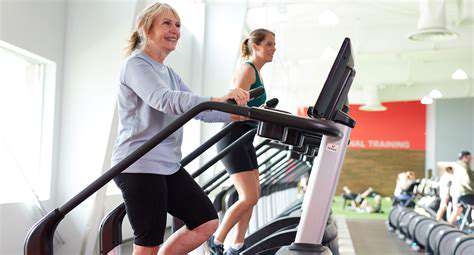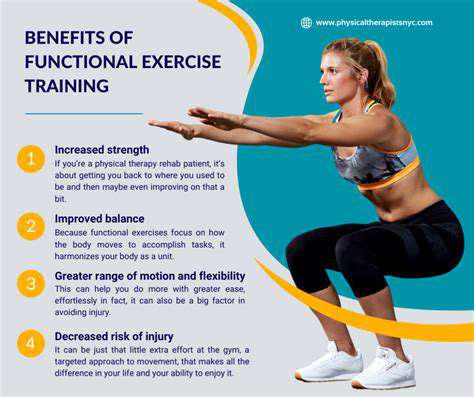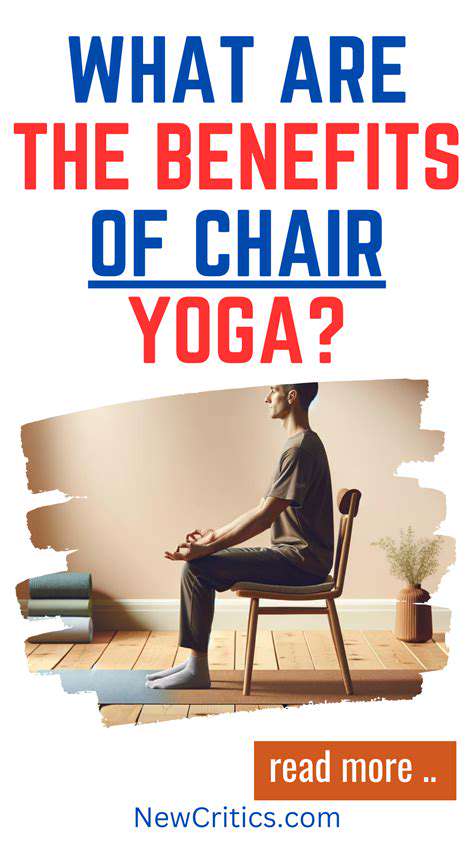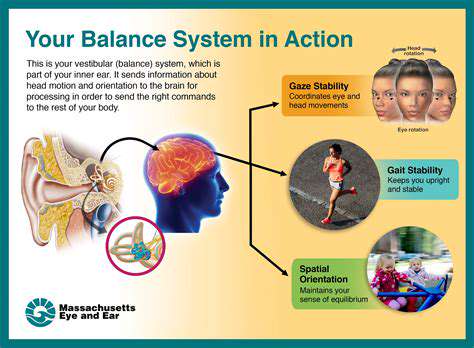Walking for Seniors with Parkinson's Disease: Tips and Modifications
Choosing the Right Walking Environment
Finding Safe and Accessible Routes
Selecting an appropriate walking path requires careful consideration of safety and accessibility for individuals with Parkinson's. Paved walkways, smooth sidewalks, and well-kept trails with few obstructions are ideal choices. Steer clear of locations with heavy vehicle traffic, irregular ground surfaces, or potential dangers like slick areas or sharp slopes. The length and topography of the route matter significantly - shorter, level paths generally work better than extended, uneven ones, particularly in the disease's initial phases. Familiarizing yourself with the path in advance and having alternative options ready contributes to a more positive walking experience.
Local green spaces, community facilities, and residential neighborhoods often offer diverse walking possibilities. Choosing surroundings that feel comfortable and known to the walker can dramatically improve the experience. Routes featuring periodic seating areas allow for necessary breaks, supporting continued participation. Identifying nearby restroom facilities and other amenities can provide additional reassurance and enable longer walking sessions.
Considering Environmental Factors
Weather conditions play a crucial role in walking comfort and safety. Extreme temperatures - whether hot or cold - can intensify Parkinson's symptoms, making moderate conditions preferable. Early morning or evening hours typically offer more comfortable temperatures for walking. When possible, select paths with natural shade or shelter, particularly in warmer seasons. Appropriate attire and footwear become essential for handling various weather situations safely.
The level of activity and noise in the walking environment also affects the experience. Less congested routes, especially during busy times, can decrease the chance of accidents or other issues. Environmental disturbances like loud noises might prove distracting or stressful. A tranquil setting often enhances the overall quality of the walking session.
Incorporating Sensory Stimulation
Integrating sensory components into the walking environment can enrich the experience and potentially alleviate symptoms. Water elements like ponds or fountains often create calming atmospheres. Green spaces featuring plants and flowers provide visual and olfactory stimulation. Routes containing recognizable landmarks or scenery that trigger pleasant memories can foster feelings of security and comfort.
Sensory elements should match individual tastes and requirements. While some may find bustling streets overstimulating, others might appreciate the energy. Designing walking paths that include personally meaningful and soothing features can make the activity more rewarding for those with Parkinson's. Thoughtful attention to these details can substantially improve the walking experience.
Addressing Potential Challenges and Accommodations
Individuals with Parkinson's frequently encounter difficulties like balance problems, slower movement, or medication effects that influence walking ability. Wider pathways help accommodate these challenges. Level, obstacle-free routes are critical for maintaining steadiness and preventing accidents. Flexibility in pacing and duration, along with opportunities to pause when needed, helps prevent exhaustion.
Support systems should be considered. Walking with a partner, utilizing mobility aids, or planning routes near available transportation can reduce risks. Emergency preparedness, including knowledge of nearby medical resources, builds confidence during walking activities. Customizing the walking experience to individual capabilities and requirements - including potential use of assistive devices and adjusting walk length or intensity - ensures safety and enjoyment.
Incorporating Exercises and Activities for Enhanced Walking

Importance of Physical Activity
Regular physical movement plays a vital role in maintaining health and wellness. Exercise extends beyond physical appearance to influence how we feel. Various forms of activity strengthen the heart and circulatory system, enhance mood, and lower chronic disease risks. Consistent physical activity can dramatically improve life quality and longevity. Exercise serves as an effective tool for managing stress and anxiety while fostering feelings of achievement and self-efficacy.
Physical movement also enhances mental sharpness and memory retention, increasing alertness and concentration throughout daily activities. It represents a powerful preventive measure against age-related cognitive decline. The advantages of regular activity reach well beyond the physical, profoundly impacting psychological health and overall well-being.
Types of Exercises and Activities
Numerous exercise options contribute to healthy living. Cardiovascular activities like jogging, aquatic exercise, or bicycling benefit heart health. Resistance training using weights or elastic bands develops muscle and bone strength. Flexibility practices such as yoga or stretching improve mobility and reduce injury likelihood. Discovering activities that bring genuine enjoyment is crucial for maintaining long-term participation and enthusiasm. Experimenting with different options helps identify the most suitable choices.
A balanced approach combining various exercise types yields optimal fitness results. Beginning gradually and progressively increasing workout intensity and duration as fitness improves is advisable. Medical consultation before initiating new exercise programs is particularly important for individuals with existing health concerns.
Creating a Routine and Staying Motivated
Establishing a consistent exercise schedule is fundamental for achieving lasting health benefits. Pre-planning workouts, incorporating them into weekly plans, and setting achievable objectives helps maintain focus. Monitoring progress through fitness applications or simple journals can provide motivation and a sense of accomplishment.
Exercise partners or group fitness classes can enhance commitment and accountability. Celebrating milestones reinforces positive behaviors. Remember that persistence leads to results - small, regular efforts accumulate into significant improvements over time. View temporary setbacks as learning opportunities rather than failures. Developing healthy habits represents a lifelong journey rather than a short-term endeavor.
Building a Sustainable Walking Routine
Understanding the Benefits
Developing a walking routine, particularly for those with Parkinson's Disease, provides extensive benefits beyond physical health. Walking enhances cardiovascular function, lowering heart disease and stroke risks. It also fortifies muscles and bones, critical for maintaining stability and preventing falls - a major concern for Parkinson's patients.
Regular walking can substantially elevate mood and reduce depressive and anxious symptoms. The endorphin release during physical activity positively influences mental health - an often underestimated aspect of Parkinson's management. Improved sleep quality, another area frequently affected by the condition, represents an additional benefit.
Creating a Personalized Plan
Developing an enduring walking routine requires thoughtful consideration of individual capabilities and limitations. Beginning with modest efforts and gradually increasing walk duration and intensity helps prevent injuries and promotes consistency. Healthcare providers or physical therapists can help establish appropriate starting points and customize plans to specific needs and conditions.
Factors like medication effects, balance challenges, and existing discomfort should inform planning. Effective plans incorporate rest periods and adjustments to accommodate these elements. Paying attention to bodily signals and modifying plans when experiencing pain or discomfort is essential.
Overcoming Challenges
Establishing a walking routine presents various obstacles for Parkinson's patients. Sustaining motivation and addressing issues like rigidity, tremors, or balance difficulties are crucial for long-term success. Walking companions or support groups offer encouragement and accountability, making the process more enjoyable and sustainable.
Mobility aids like walkers or canes provide additional stability. Varying walking environments - parks, community centers, or indoor tracks - maintains engagement and reduces monotony. Remember that consistency matters most; even brief walks yield benefits.
Integrating Walking into Daily Life
For true integration into a sustainable routine, walking should become a natural daily activity. Scheduling specific walking times, similar to other appointments, helps establish consistency. Making it social by walking with friends or relatives increases enjoyment and commitment. Incorporating walking into existing habits - taking stairs instead of elevators or walking during work breaks - seamlessly blends activity into everyday life.
Pairing walking with other enjoyable activities like listening to music or educational content enhances the experience. Exploring different routes and landscapes keeps the activity fresh and interesting. Adapting the walking routine to changing needs and circumstances ensures long-term success.











